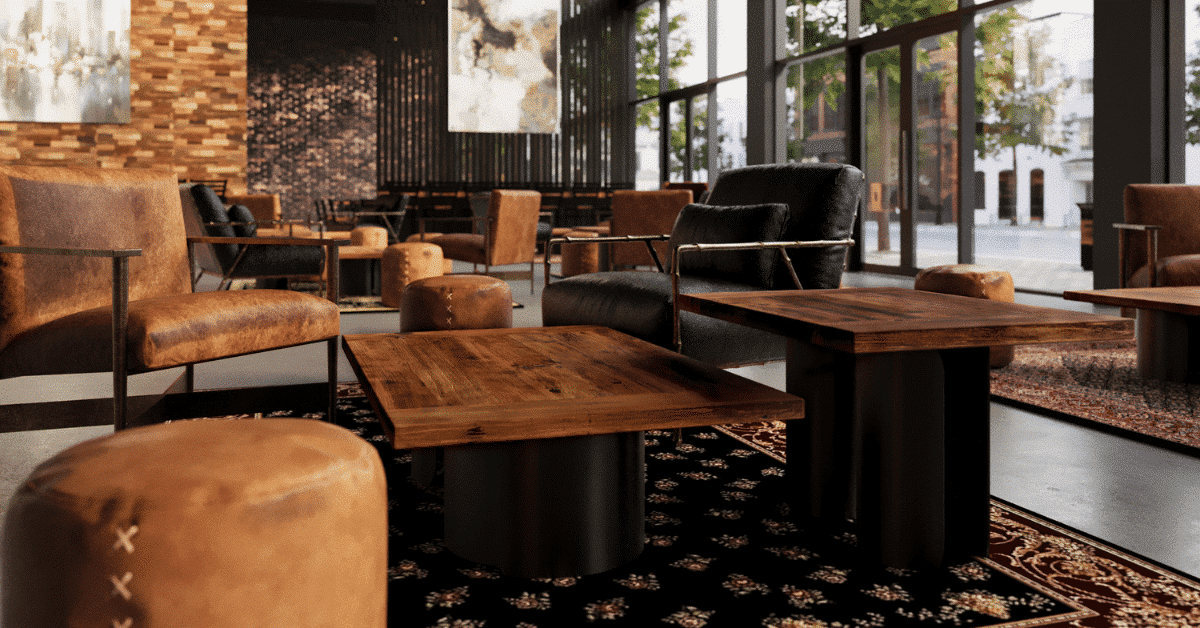Blog
The Ultimate Guide to Choosing the Perfect Seating Solution for Your Restaurant

Selecting the perfect seating solution for your restaurant is crucial to creating a comfortable and inviting atmosphere for your customers. The right seating arrangement not only enhances the dining experience but also contributes to the overall success of your establishment. In this guide, we provide insights into various factors to consider, the types of seating options available, and tips for creating a balanced seating layout that optimizes customer satisfaction and maximizes profitability.
Factors to Consider When Choosing Restaurant Seating
Space and Capacity
Before purchasing the perfect seating solution for your restaurant, it’s essential to evaluate your establishment’s floor plan and determine the number of seats you can comfortably accommodate. Consider the layout of your space and the distance between tables to ensure easy movement for your customers and staff.
Comfort and Functionality
Comfort should be a priority when selecting the perfect seating solution for your restaurant. Consider the type of clientele you serve and choose seating that caters to their specific needs. For example, if your restaurant caters to families, consider incorporating booths and highchairs.
Durability and Quality
Invest in durable and high-quality seating that can withstand the wear and tear of daily use. Opt for materials that are easy to clean and maintain, such as wood, metal, or vinyl.
Budget
Determine your budget for seating and strive to find options that provide the best value without compromising on quality, comfort, and style.
Types of Restaurant Seating Options
Chairs
Chairs are a versatile option for restaurants, as they can be easily moved and rearranged to accommodate various group sizes. They come in a variety of styles, materials, and colors to suit your establishment’s aesthetic.
Bar Stools
Bar stools are an excellent choice for establishments with bar areas or high-top tables. They create a casual and social atmosphere, encouraging customers to interact with one another and enjoy a drink.
Booths
Booths provide a cozy and intimate dining experience, making them ideal for family-friendly establishments or restaurants that emphasize privacy. They also offer efficient use of space, as they can be placed against walls or in corners.
Benches
Benches are a space-saving and cost-effective option for restaurants with limited space. They can be placed along walls or combined with chairs for a mix-and-match seating arrangement.
Creating a Balanced Seating Layout
Designing an effective seating layout requires a strategic approach that caters to the needs of your customers and maximizes the use of available space. Here are some tips for achieving a balanced seating arrangement:
1. Mix and Match Seating Options
Incorporate a variety of seating options to cater to different customer preferences and group sizes. This can include a mix of chairs, bar stools, booths, and benches.
2. Provide Adequate Space Between Tables
Ensure there is sufficient space between tables for customers and staff to move around comfortably. This will also help create a more relaxed and enjoyable dining atmosphere.
3. Consider Traffic Flow
Design your seating layout to facilitate smooth traffic flow, ensuring customers can easily navigate the space and staff can efficiently serve tables.
4. Optimize Seating Capacity
Maximize your restaurant’s seating capacity without compromising on comfort or aesthetics. Opt for space-saving seating options, such as benches or back-to-back booths, to accommodate more guests without overcrowding your space.
5. Incorporate a Focal Point
Create a focal point in your restaurant’s layout, such as a statement piece of artwork or a well-designed bar area. This can help draw customers in and create a visually appealing atmosphere.
6. Account for Accessibility
Ensure your seating layout accommodates customers with mobility challenges or disabilities. Provide ample space for wheelchair access and consider incorporating adjustable seating options.
Maintaining and Caring for Your Restaurant Seating
Proper maintenance and care are crucial for preserving the appearance and durability of your restaurant seating. Here are some tips to keep your seating looking and functioning at its best:
1. Regular Cleaning
Clean your seating regularly to remove dirt, spills, and stains. Use appropriate cleaning products and techniques for the specific material, whether it’s wood, metal, vinyl, or fabric.
2. Inspect for Damage
Regularly inspect your seating for signs of wear, such as loose screws or bolts, and address any issues promptly to prevent further damage.
3. Rotate Seating
Rotate your seating to distribute wear evenly, especially in high-traffic areas. This can help prolong the life of your seating and maintain a consistent appearance throughout your establishment.
4. Provide Protective Accessories
Consider providing protective accessories, such as chair cushions or floor protectors, to minimize wear and tear on your seating.
Conclusion
Choosing the perfect seating solution for your restaurant is essential for creating a comfortable, inviting, and functional dining environment. By considering factors such as space, comfort, durability, and budget, and selecting a balanced mix of seating options, you can design a layout that enhances your customers’ experience and contributes to the overall success of your establishment. Regular maintenance and care will ensure that your seating remains in top condition, providing a welcoming atmosphere for years to come.
